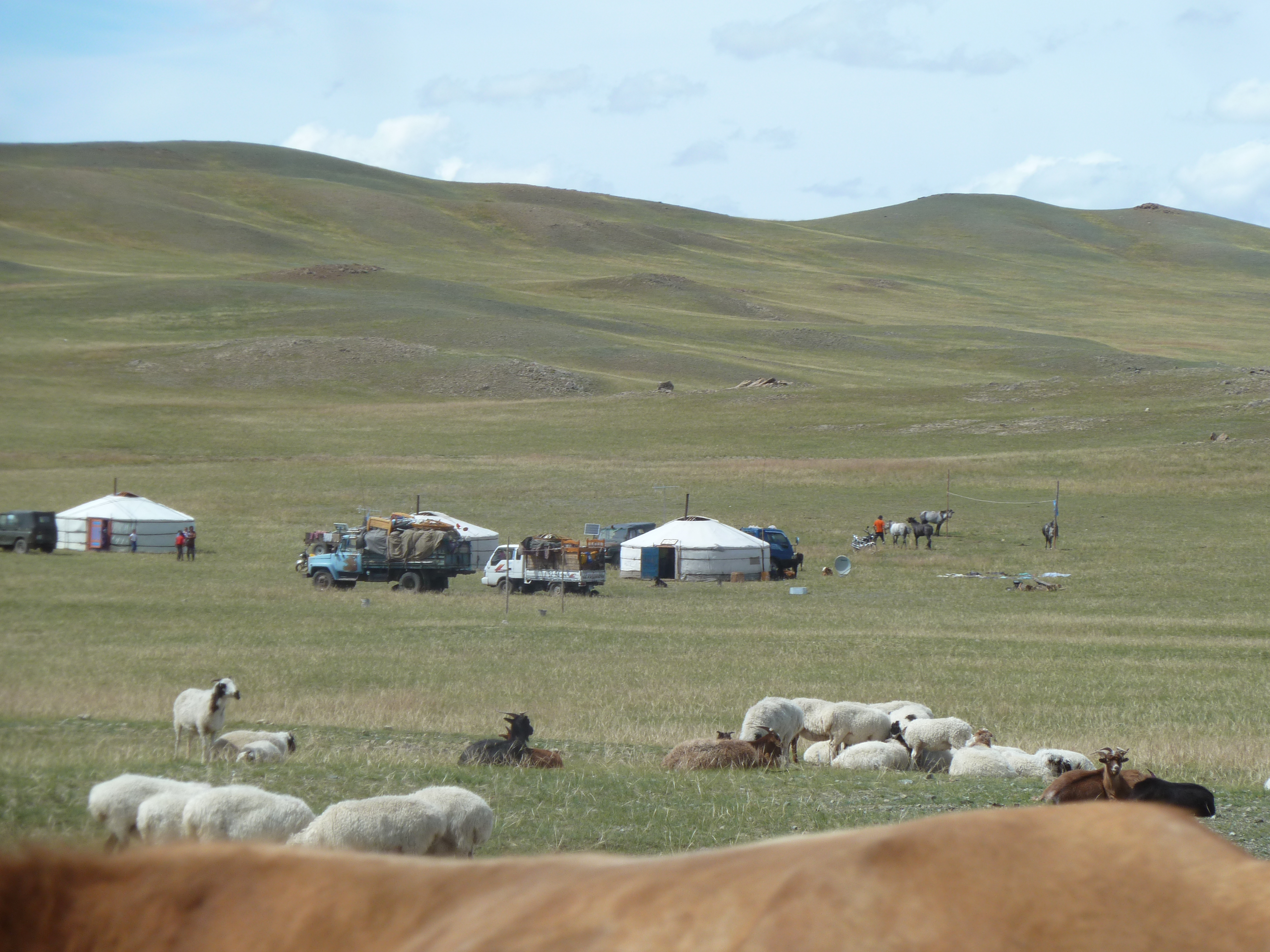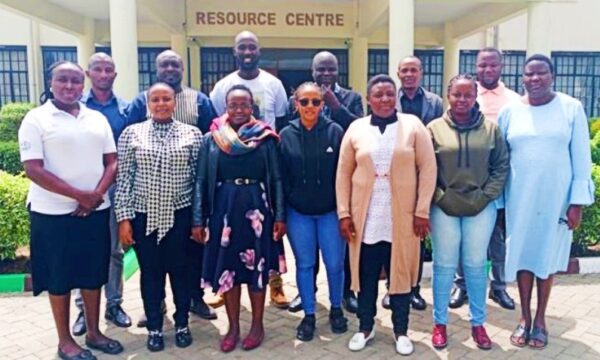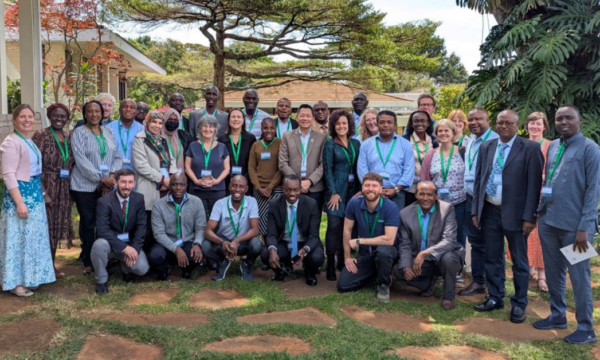
Pastoralists, Mongolia. Image courtesy of Esther Schelling, Swiss TPH.
One of a series of blogs written by CABI editors for One Health Day on November 3rd 2016
It's always nice to meet up with a CABI author at a conference especially when they are giving a talk around a theme dear to CABI‘s heart, namely “One Health”: the concept of working across the interface of animal, plant, human and environment to achieve health & development which is sustainable and fair. CABI has been gathering, managing and generating research information across all these sectors since 1912. We know “its all connected”.
The conference was the RSTMH biennial meeting [Cambridge UK, Sept 12-16th, 2016], and the author in question, Esther Schelling, co-editor of CABI’s book One Health: The Theory and Practice of Integrated Health Approaches [2015]. To read a free e-chapter, use this link.
In One Health beyond early detection and control of zoonoses Esther talked about her long-time project with nomadic pastoralists in Chad and a rift valley fever (RVF) control project in Kenya. She drew attention to the need for:
- more interdisciplinary studies to include an evaluation of One Health working
- involvement of social scientists
- engagement of key stakeholders
And tellingly she provided a cost-benefit analysis to society of controlling zoonoses when the disease is in its animal host before it infects human beings.
Those cost-benefit analyses made a deep impression on the delegates, many of whom were involved in zoonotic neglected tropical diseases. Perhaps for the first time they were appreciating the added benefits and synergies that a transdisciplinary approach between science, society, humanities and medicine could bring.
Highlights from her talk:
Cost-effective control
Schelling and her Swiss TPH colleagues have analysed the cost-benefit, and cost-effectiveness, for a number of zoonoses which affect livestock in Africa and Asia. By putting financial figures on the intervention cost vs loss of household income and benefits in public health, private health and agriculture, Roth et al (2003) were able to show that mass vaccination of livestock against brucellosis in Mongolia was highly cost effective. It cost less than 20 US$ per DALY averted (DALY= human life lived with disability) and the financial benefit to the society overall was over 3x the intervention cost.
Similar assessment studies for other zoonoses affecting remote rural people and important to international trade have been undertaken by the Swiss, and by other researchers, including echinococcosis, cysticercosis, rabies, rift valley fever, and human african trypanosomiasis. More are on the way.
Use social scientists in a society on the move
Esther is a veterinary epidemiologist working with nomadic pastoralists in Chad, who has come to value the role of social scientists who live & travel with these communities.
A social scientist will achieve a more accurate data on stillbirths than a visiting epidemiologist using a questionnaire, she declared![A reference to a study on Tamasheq nomads in Northern Mali].
Social science tools like network analysis enable you to understand the local context, perceptions and point of greatest leverage (a communities’ priorities may well be outside the health sector’s).
Tailoring your One Health project to local needs
In order to achieve the very real benefits of one-health working, you have to understand that interdisciplinary projects take longer than the usual 3 years and that at set up you need to engage with many stakeholders (communities, authorities and different disciplines). So its vital to identify the stakeholders, and establish with them which control scenario is relevant to them. The example given was the RVF control project in Kenya [Kimani et al 2016; Kimani et al, Ecohealth 2016, in press].
Why did this project succeed? A social network analysis for Garissa county in North-Eastern Kenya identified a web of 30 stakeholders who were invited to workshops to build engagement and get them to choose the intervention they wanted. The web established that the control point, the centre of the web, the stakeholder who could make or break the project, was the “arid land management program (ALRMP). Not UNICEF or District Medical or Veterinary Officers (who were there in the 30).
Stakeholders took part in modelling realistic scenarios which could reduce the impact of a future RVF outbreak, and help create a shared plan of action across the sectors. The results – coupled with financial and burden of disease assessments – are reported in the forthcoming EcoHealth paper. The authors recommend vaccination of livestock and enhanced surveillance in high risk zones in Kenya prior to the next outbreak, as this is most beneficial in terms of saved costs in the human and livestock sector and in preventing human disease.
In an earlier project in Chad [Schelling et al 2007], the stakeholders chose joint animal and human vaccination campaigns (Expanded Programme for Immunization, EPI) and they realised they could treat more children via veterinarians who reached remote rural areas. They shared costs and the savings made. The quality of locally produced vaccines increased. EPI became policy for remote rural areas and for “hard to reach populations” [Schelling, E. et al, Chapter 20 One Health: The Theory and Practice… ]
In another setting, it may be that synergy between animal and plant health services (eg CABI’s Plantwise program) would be more appropriate to the needs of the local community and the NGOs represented on the ground. The example given? Milk from cattle and goats is a good source of retinol, or fat-soluble Vitamin A, an essential vitamin for human health. Preventing crop losses and improving fodder storage would ensure fodder for livestock and thus milk consumption could be maintained year round, improving the nutrition of pastoralist children and adults [Bechir, M. et al Ecohealth 2012; Boa, E. et al, Chapter 22 One Health: The Theory and Practice...]
One Health: integrated surveillance and preparedness plans
Antimicrobial Resistance (AMR) is affecting us all (see my colleague Miro’s blog Excessive use of antimicrobials in intensive livestock farming as One Health issue) but so far, we were told, only the Canadian government have brought in an integrated program for AMR surveillance (CIPARS), connecting food and companion animals, wildlife, pastimes (eg swimming), the rural and urban environment and humans.
In developing countries, it makes even better sense to integrate demographic and health surveillance so that governments can plan. Projects increasingly use trained community members who report data on animal diseases, plant diseases and human illness and deaths (including stillbirths). You could have combined clinics offering information and help for all 3 disease/health areas.
Final comments:
According to Professor David Molyneux who also attended the meeting, “One Health has been described disparagingly as a “Vet Landgrab”: I‘ve heard this before, and I agree with him, its nothing of the sort.
One Health working brings financial savings, improved human and animal health, food security and environmental benefits (inc. climate change). Its a smart way of working for developing country governments to improve their health systems, and for international donors to help them meet the SDGs. And for developed countries, dealing with climate change, economic pressures, and potential epidemic diseases, it also makes sense.
Learn more about One Health, by signing up to the free online One Health course from FutureLearn (run by Esther and her colleagues Jakob Zinsstag and Bassirou Bonfoh). Starts November 7th and runs for 6 weeks.
CABI’s Global Health database is an exceptional source of One Health research for the public health community, drawing as it does on agricultural, environmental, veterinary and public health sources to provide information on all aspects of zoonoses and vector borne diseases (152,093 records). The link to this search can be used by Global Health subscribers.
Related articles
Related News & Blogs
Biosecurity and skills development workshop brings together key players in Africa’s plant health ecosystem
CABI has convened a plant biosecurity training and skills development workshop bringing together key players in Africa’s plant health ecosystem keen to help the continent’s smallholder farmers improve their livelihoods and food security. The workshop w…
23 June 2025







